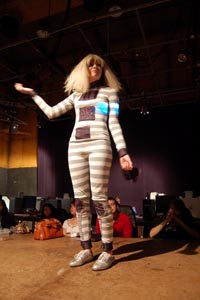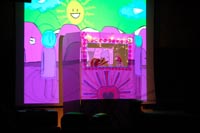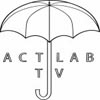
Dream/Delirium
According to consciousness studies, the space between the waking and dream states is a continuum. Depending on mood, task, tiredness, and a host of other variables, we occupy different places in the continuum from moment to moment. Example: You are driving a familiar stretch of highway, you start to daydream about a fond experience or familiar song, and then suddenly notice that you are ten miles further down the road with no memory of the intervening distance.
In this course we examine the continuum between waking and dreaming as a source of creativity, a resource for narrative, a space of exploration, and a frontier of research. We'll discuss scientific discoveries based on dream (e.g., Kekule's discovery of the benzene ring) and academic disciplines based on delirium (e.g., Surrealist Anthropology).
Other regimes of knowledge that inflect on the course topic include the interface between the macro-universe governed by Cartesian rules, Euclidean geometry, and Newtonian physics; and the nano-universe governed (if that's the operant term) by quantum physics. (Physicist Richard Feynman is said to have remarked that "You don't understand quantum physics; you just get used to it.") We'll use quantum phenomena such as entanglement as points of departure for discussion about the relationship of delirium to "rational" worldviews, and of human intelligence in post-fu contexts.
There are no written
exams. Instead you will use the theories and tools you acquire
during the semester to MAKE STUFF! about some aspect of the space
between waking and dreaming and/or the swerve into delirium. What
you make can be in any form: sound, installation, video, computer
animation, collage, sculpture, assemblage,  performance. You will do this in stages, starting
with simple projects and moving to more complex ones, using humor,
irony, and unusual approaches and techniques. We encourage your
own interpretation and voice.
performance. You will do this in stages, starting
with simple projects and moving to more complex ones, using humor,
irony, and unusual approaches and techniques. We encourage your
own interpretation and voice.
Class is in discussion and
studio format. This means that your active participation is a
requirement of the course. During the semester we expect you to
contribute your own ideas and arguments to the discussion, and to
be willing to take the risks such contributions imply. In ACTLab
courses we assume a
high level of motivation on your part
and your willingness to self-start, set your own goals, think
independently, collaborate with others, seek help when you need
it, and take risks. Let's make it an
interesting
semester!
View a sample syllabus here.
Here are some resources we use for the course:
Wikipedia - Dream Interpretation |
Nick Herbert and The Metaphase Typewriter The Surrealist Manifesto (1924)
|








